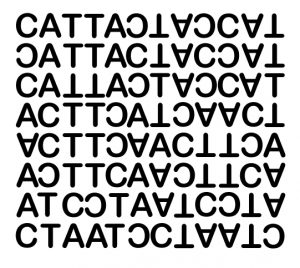Characteristics of Dyslexia

The graphic above is an example of disorientation and shows how a dyslexic can perceive or misread the word, “cat.” There are over 40 different ways the person can “see” this word. Even though the child has just read the sentence, he or she does not recognize “cat” in the following sentence. That is because it can look different every time the child sees it, i.e. “tac,” “etc,” “cat” as taken from the Reading Research Council Brochure at the Davis® Dyslexia Association International.
Usually someone with “The Gift” has about 10 characteristics of dyslexia. Do you have “The Gift?”
- Incorrect or inconsistent spelling
- Words or lines skipped when reading and writing
- Punctuation marks or capital letters omitted, ignored or not seen
- Words and letters are omitted, altered or substituted while reading or writing
- Letters and numbers move, disappear, grow or shrink
- Shapes and sequences of letters and numbers appear changed or reversed
- Dizziness or nausea while reading
- Difficulty making some speech sounds
- Mispronounced digraphs such as “ch,” “th” and “sh”
- Appears not to listen or hear what is said
- Sounds perceived as quieter, louder, farther away or closer
- Difficulty with handwriting
- Problems with balance and coordination
- Hyperactivity or hypoactivity
- Inability to sit still
- Difficulty being on time or telling time
- Excessive daydreaming
- Loses train of thought
- Poor sense of direction
- Trouble sequencing
- Above average IQ, but doesn’t test well
- Feels dumb, has poor self-esteem
- Difficulty with math concepts
highlights important information, which may or may not be an actual quote. It uses distinct styling to set it apart from other content on the page.”
